1. Koo SM, Kim SY, Choi SM, Lee HK. Korean Interstitial Lung Diseases Study Group. 2019; Korean guidelines for diagnosis and management of interstitial lung diseases: part 5. Connective tissue disease associated interstitial lung disease. Tuberc Respir Dis (Seoul). 82:285–97. DOI:
10.4046/trd.2019.0009. PMID:
31172701. PMCID:
PMC6778739.

2. Fischer A, du Bois R. 2012; Interstitial lung disease in connective tissue disorders. Lancet. 380:689–98. Erratum in: Lancet 2012;380:1148. DOI:
10.1016/S0140-6736(12)61079-4. PMID:
22901890.

3. Castelino FV, Goldberg H, Dellaripa PF. 2011; The impact of rheumatological evaluation in the management of patients with interstitial lung disease. Rheumatology (Oxford). 50:489–93. DOI:
10.1093/rheumatology/keq233. PMID:
20685802.

5. Hansell DM. 2001; Computed tomography of diffuse lung disease: functional correlates. Eur Radiol. 11:1666–80. DOI:
10.1007/s003300100880. PMID:
11511888.
7. Song JW. 2014; Interstitial lung disease in connective tissue disease. J Rheum Dis. 21:282–8. DOI:
10.4078/jrd.2014.21.6.282.

8. Vij R, Strek ME. 2013; Diagnosis and treatment of connective tissue disease-associated interstitial lung disease. Chest. 143:814–24. DOI:
10.1378/chest.12-0741. PMID:
23460159. PMCID:
PMC3590889.

13. Raghu G, Remy-Jardin M, Richeldi L, Thomson CC, Inoue Y, Johkoh T, et al. 2022; Idiopathic pulmonary fibrosis (an update) and progressive pulmonary fibrosis in adults: an official ATS/ERS/JRS/ALAT clinical practice guideline. Am J Respir Crit Care Med. 205:e18–47. DOI:
10.1164/rccm.202202-0399ST. PMID:
35486072. PMCID:
PMC9851481.
14. Pugashetti JV, Adegunsoye A, Wu Z, Lee CT, Srikrishnan A, Ghodrati S, et al. 2023; Validation of proposed criteria for progressive pulmonary fibrosis. Am J Respir Crit Care Med. 207:69–76. DOI:
10.1164/rccm.202201-0124OC. PMID:
35943866.

16. Tanaka N, Kim JS, Newell JD, Brown KK, Cool CD, Meehan R, et al. 2004; Rheumatoid arthritis-related lung diseases: CT findings. Radiology. 232:81–91. DOI:
10.1148/radiol.2321030174. PMID:
15166329.

17. Lynch DA, Sverzellati N, Travis WD, Brown KK, Colby TV, Galvin JR, et al. 2018; Diagnostic criteria for idiopathic pulmonary fibrosis: a Fleischner Society White Paper. Lancet Respir Med. 6:138–53. DOI:
10.1016/S2213-2600(17)30433-2. PMID:
29154106.

18. Balbir-Gurman A, Guralnik L, Yigla M, Braun-Moscovici Y, Hardak E. 2018; Imaging aspects of interstitial lung disease in patients with rheumatoid arthritis: literature review. Autoimmun Rev. 17:87–93. DOI:
10.1016/j.autrev.2017.09.013. PMID:
29196242.

19. Smith M, Dalurzo M, Panse P, Parish J, Leslie K. 2013; Usual interstitial pneumonia-pattern fibrosis in surgical lung biopsies. Clinical, radiological and histopathological clues to aetiology. J Clin Pathol. 66:896–903. DOI:
10.1136/jclinpath-2013-201442. PMID:
23703852. PMCID:
PMC3786616.

20. Hoffmann-Vold AM, Fretheim H, Halse AK, Seip M, Bitter H, Wallenius M, et al. 2019; Tracking impact of interstitial lung disease in systemic sclerosis in a complete nationwide cohort. Am J Respir Crit Care Med. 200:1258–66. DOI:
10.1164/rccm.201903-0486OC. PMID:
31310156.

21. Khanna SA, Nance JW, Suliman SA. 2022; Detection and monitoring of interstitial lung disease in patients with systemic sclerosis. Curr Rheumatol Rep. 24:166–73. Erratum in: Curr Rheumatol Rep 2022;24:321. DOI:
10.1007/s11926-022-01067-5. PMID:
35499699. PMCID:
PMC9399070.

22. Luppi F, Sebastiani M, Silva M, Sverzellati N, Cavazza A, Salvarani C, et al. 2020; Interstitial lung disease in Sjögren's syndrome: a clinical review. Clin Exp Rheumatol. 38 Suppl 126(4):291–300.
23. Lohrmann C, Uhl M, Warnatz K, Ghanem N, Kotter E, Schaefer O, et al. 2004; High-resolution CT imaging of the lung for patients with primary Sjogren's syndrome. Eur J Radiol. 52:137–43. DOI:
10.1016/j.ejrad.2004.01.006. PMID:
15489070.
24. Nakanishi M, Fukuoka J, Tanaka T, Demura Y, Umeda Y, Ameshima S, et al. 2011; Small airway disease associated with Sjögren's syndrome: clinico-pathological correlations. Respir Med. 105:1931–8. DOI:
10.1016/j.rmed.2011.08.009. PMID:
21903371.
25. Soto-Cardenas MJ, Perez-De-Lis M, Bove A, Navarro C, Brito-Zeron P, Diaz-Lagares C, et al. 2010; Bronchiectasis in primary Sjögren's syndrome: prevalence and clinical significance. Clin Exp Rheumatol. 28:647–53. PMID:
20883638.
26. Tanizawa K, Handa T, Nakashima R, Kubo T, Hosono Y, Aihara K, et al. 2013; The prognostic value of HRCT in myositis-associated interstitial lung disease. Respir Med. 107:745–52. DOI:
10.1016/j.rmed.2013.01.014. PMID:
23485097.

27. Gutsche M, Rosen GD, Swigris JJ. 2012; Connective tissue disease-associated interstitial lung disease: a review. Curr Respir Care Rep. 1:224–32. DOI:
10.1007/s13665-012-0028-7. PMID:
23125954. PMCID:
PMC3486427.

28. Marie I, Hachulla E, Chérin P, Dominique S, Hatron PY, Hellot MF, et al. 2002; Interstitial lung disease in polymyositis and dermatomyositis. Arthritis Rheum. 47:614–22. DOI:
10.1002/art.10794. PMID:
12522835.

29. Vizioli L, Ciccarese F, Forti P, Chiesa AM, Giovagnoli M, Mughetti M, et al. 2017; Integrated use of lung ultrasound and chest X-ray in the detection of interstitial lung disease. Respiration. 93:15–22. DOI:
10.1159/000452225. PMID:
27880957.

32. Tinti MG, Rea G, Mirijello A, Frongillo E, Sperandeo M. 2017; Is there any role for thoracic ultrasound for interstitial lung disease underlying rheumatologic conditions? Comment. Intern Emerg Med. 12:903–4. DOI:
10.1007/s11739-017-1663-3. PMID:
28401427.

33. Moazedi-Fuerst FC, Kielhauser SM, Scheidl S, Tripolt NJ, Lutfi A, Yazdani-Biuki B, et al. 2014; Ultrasound screening for interstitial lung disease in rheumatoid arthritis. Clin Exp Rheumatol. 32:199–203. PMID:
24642277.
34. Marini TJ, Rubens DJ, Zhao YT, Weis J, O'Connor TP, Novak WH, et al. 2021; Lung ultrasound: the essentials. Radiol Cardiothorac Imaging. 3:e200564. DOI:
10.1148/ryct.2021200564. PMID:
33969313. PMCID:
PMC8098095.

35. Huang Y, Liu T, Huang S, Qiu L, Luo F, Yin G, et al. 2023; Screening value of lung ultrasound in connective tissue disease related interstitial lung disease. Heart Lung. 57:110–6. DOI:
10.1016/j.hrtlng.2022.09.011. PMID:
36182861.

36. Sperandeo M, Varriale A, Sperandeo G, Filabozzi P, Piattelli ML, Carnevale V, et al. 2009; Transthoracic ultrasound in the evaluation of pulmonary fibrosis: our experience. Ultrasound Med Biol. 35:723–9. DOI:
10.1016/j.ultrasmedbio.2008.10.009. PMID:
19111972.

37. Gargani L, Doveri M, D'Errico L, Frassi F, Bazzichi ML, Delle Sedie A, et al. 2009; Ultrasound lung comets in systemic sclerosis: a chest sonography hallmark of pulmonary interstitial fibrosis. Rheumatology (Oxford). 48:1382–7. DOI:
10.1093/rheumatology/kep263. PMID:
19717549.

38. Picano E, Matucci-Cerinic M. 2011; Unnecessary radiation exposure from medical imaging in the rheumatology patient. Rheumatology (Oxford). 50:1537–9. DOI:
10.1093/rheumatology/keq412. PMID:
21183451.

39. Barreto MM, Rafful PP, Rodrigues RS, Zanetti G, Hochhegger B, Souza AS Jr, et al. 2013; Correlation between computed tomographic and magnetic resonance imaging findings of parenchymal lung diseases. Eur J Radiol. 82:e492–501. DOI:
10.1016/j.ejrad.2013.04.037. PMID:
23763860.

40. Tiddens HA, Stick SM, Wild JM, Ciet P, Parker GJ, Koch A, et al. 2015; Respiratory tract exacerbations revisited: ventilation, inflammation, perfusion, and structure (VIPS) monitoring to redefine treatment. Pediatr Pulmonol. 50 Suppl 40:S57–65. DOI:
10.1002/ppul.23266.

41. Shioya S, Tsuji C, Kurita D, Katoh H, Tsuda M, Haida M, et al. 1997; Early damage to lung tissue after irradiation detected by the magnetic resonance T2 relaxation time. Radiat Res. 148:359–64. DOI:
10.2307/3579521. PMID:
9339952.

42. Lutterbey G, Grohé C, Gieseke J, von Falkenhausen M, Morakkabati N, Wattjes MP, et al. 2007; Initial experience with lung-MRI at 3.0T: Comparison with CT and clinical data in the evaluation of interstitial lung disease activity. Eur J Radiol. 61:256–61. DOI:
10.1016/j.ejrad.2006.09.005. PMID:
17034975.

43. Hekimoğlu K, Sancak T, Tor M, Beşir H, Kalaycioğlu B, Gündoğdu S. 2010; Fast MRI evaluation of pulmonary progressive massive fibrosis with VIBE and HASTE sequences: comparison with CT. Diagn Interv Radiol. 16:30–7. DOI:
10.4261/1305-3825.DIR.2313-08.2. PMID:
20027548.
44. Pinal-Fernandez I, Pineda-Sanchez V, Pallisa-Nuñez E, Simeon-Aznar CP, Selva-O'Callaghan A, Fonollosa-Pla V, et al. 2016; Fast 1.5 T chest MRI for the assessment of interstitial lung disease extent secondary to systemic sclerosis. Clin Rheumatol. 35:2339–45. DOI:
10.1007/s10067-016-3267-0. PMID:
27107755.

45. Hochhegger B, de Souza VV, Marchiori E, Irion KL, Souza AS Jr, Elias Junior J, et al. 2015; Chest magnetic resonance imaging: a protocol suggestion. Radiol Bras. 48:373–80. DOI:
10.1590/0100-3984.2014.0017. PMID:
26811555. PMCID:
PMC4725399.

46. Rajaram S, Swift AJ, Capener D, Telfer A, Davies C, Hill C, et al. 2012; Lung morphology assessment with balanced steady-state free precession MR imaging compared with CT. Radiology. 263:569–77. DOI:
10.1148/radiol.12110990. PMID:
22396606.

47. Lonzetti L, Zanon M, Pacini GS, Altmayer S, Martins de Oliveira D, Rubin AS, et al. 2019; Magnetic resonance imaging of interstitial lung diseases: a state-of-the-art review. Respir Med. 155:79–85. DOI:
10.1016/j.rmed.2019.07.006. PMID:
31323528.
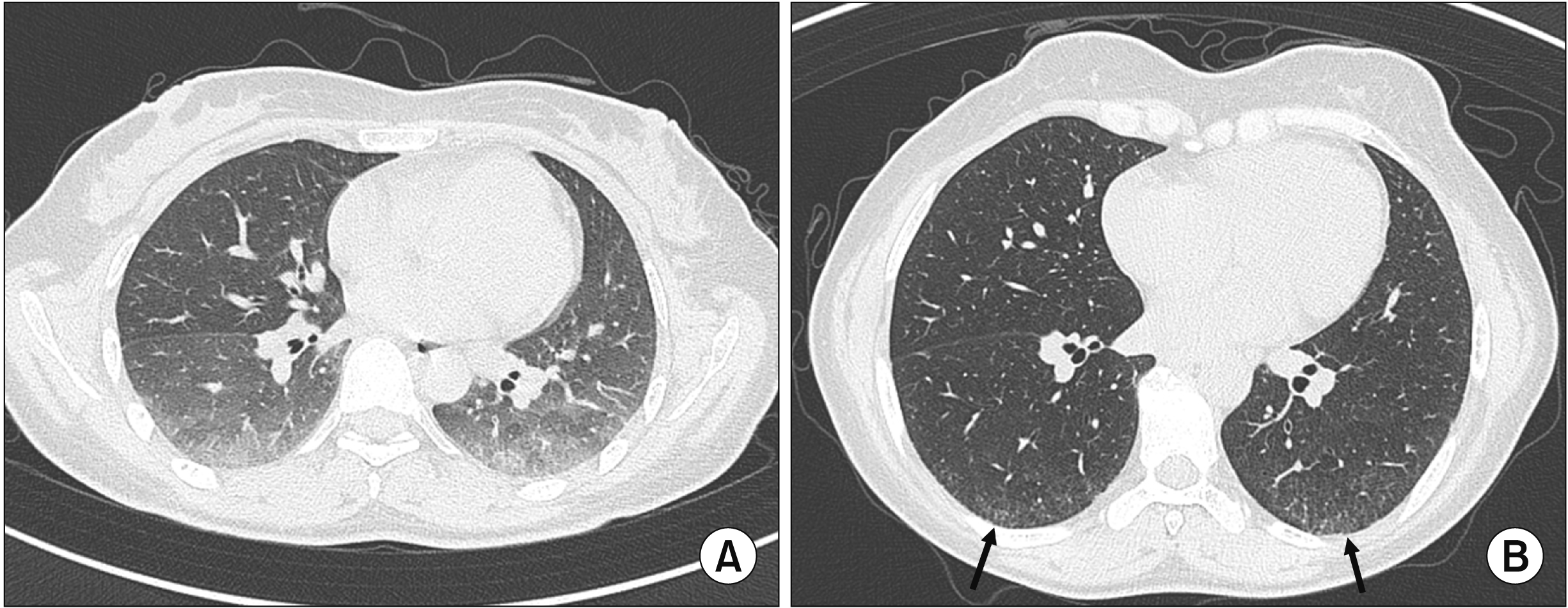
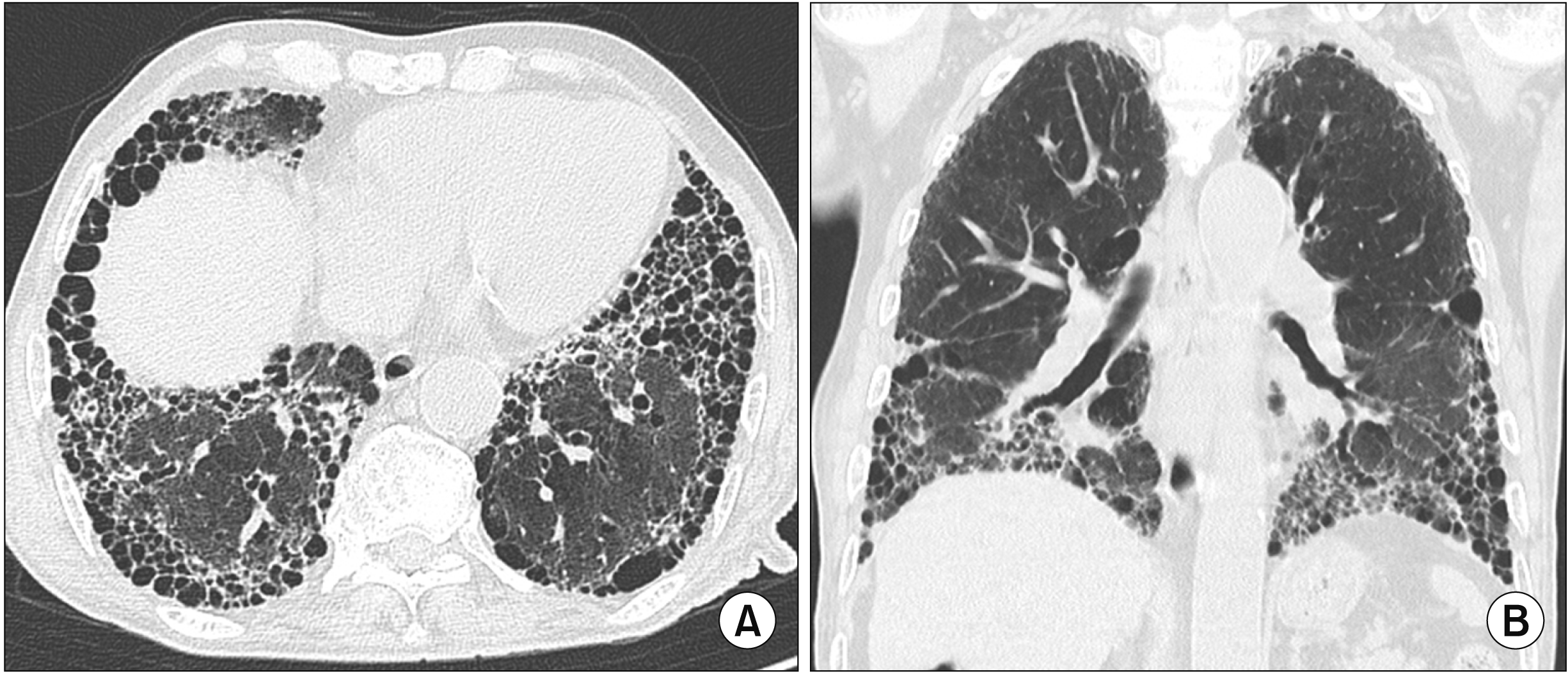
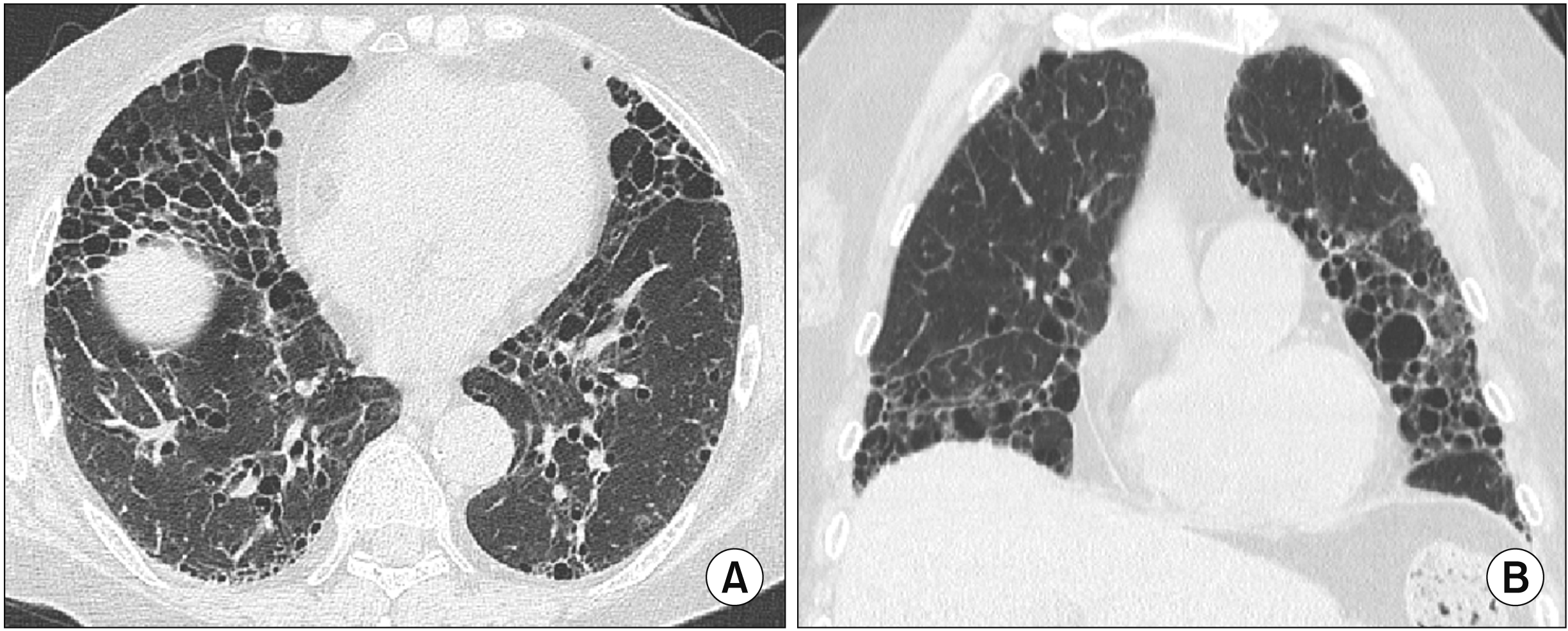
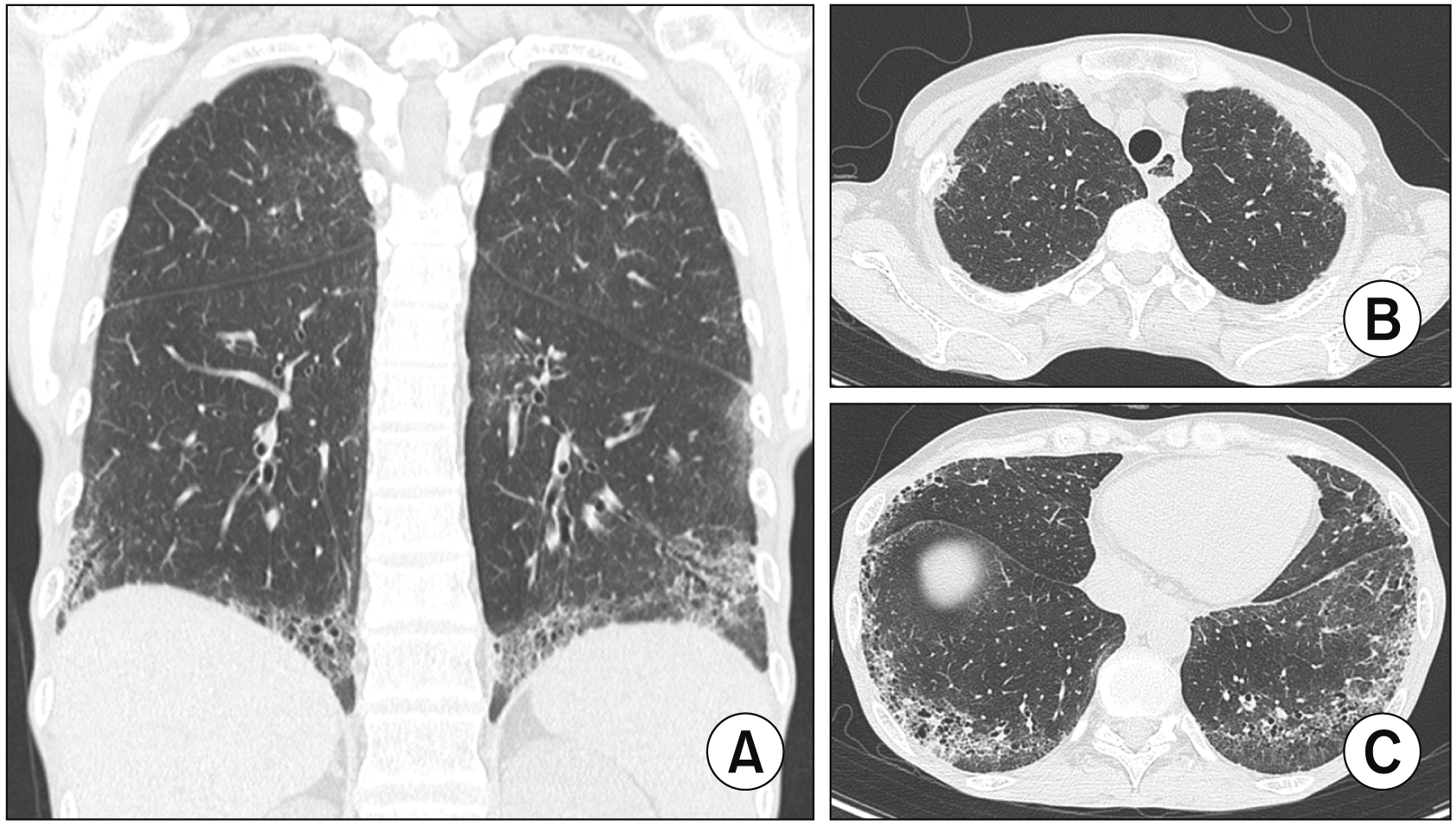

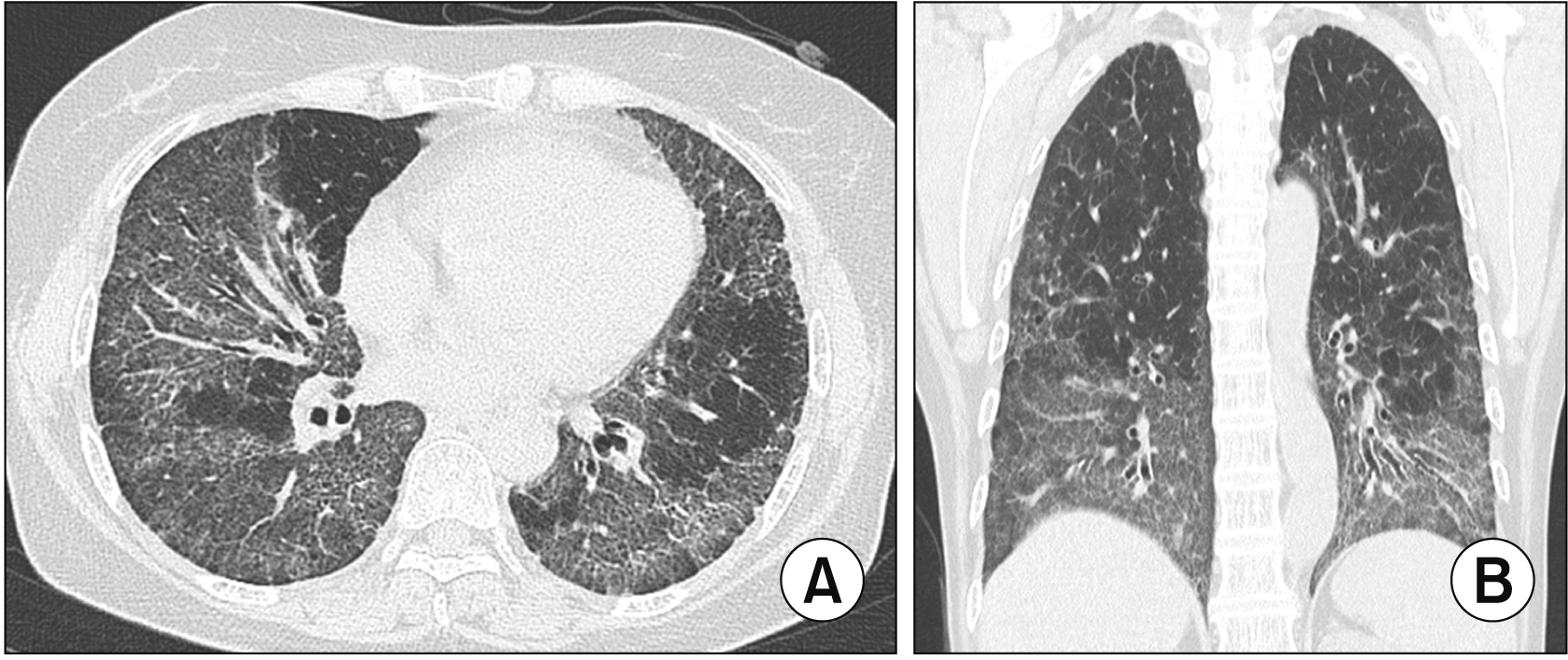

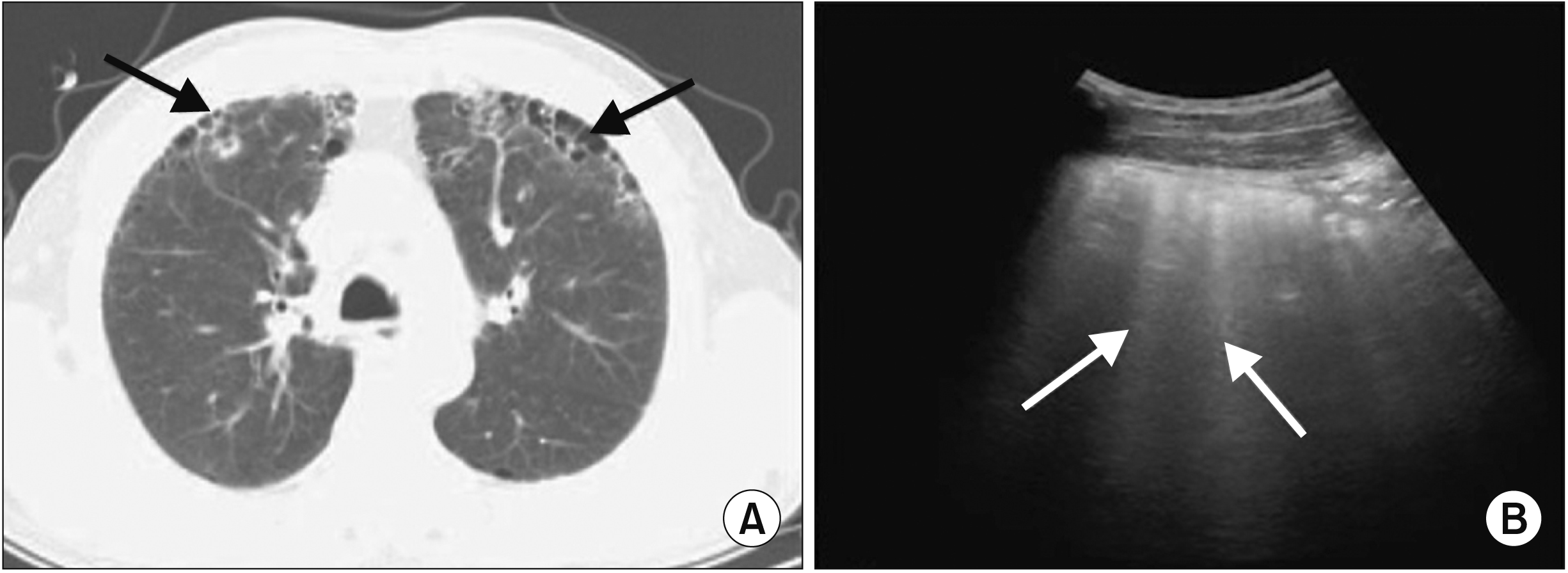





 PDF
PDF Citation
Citation Print
Print



 XML Download
XML Download